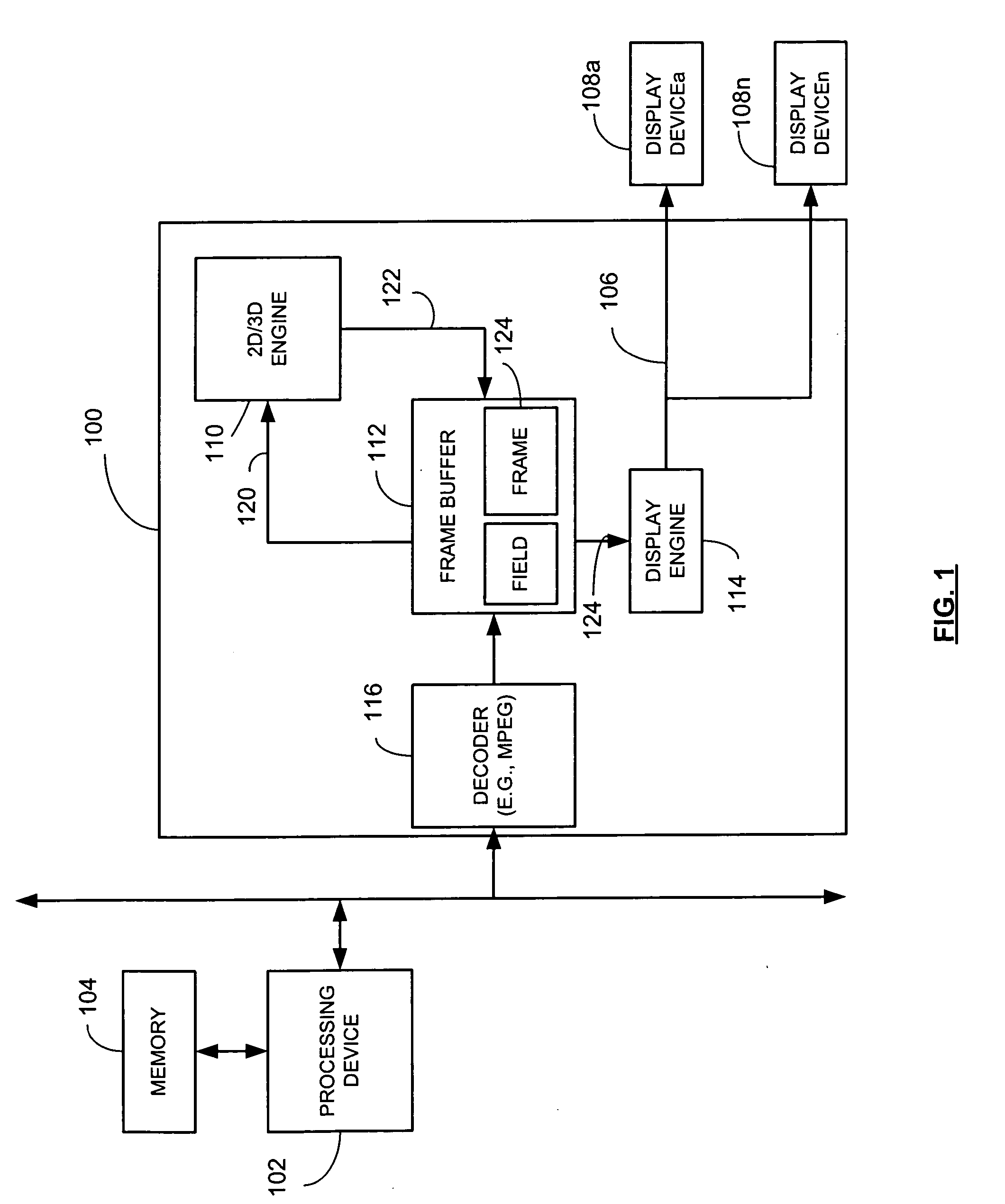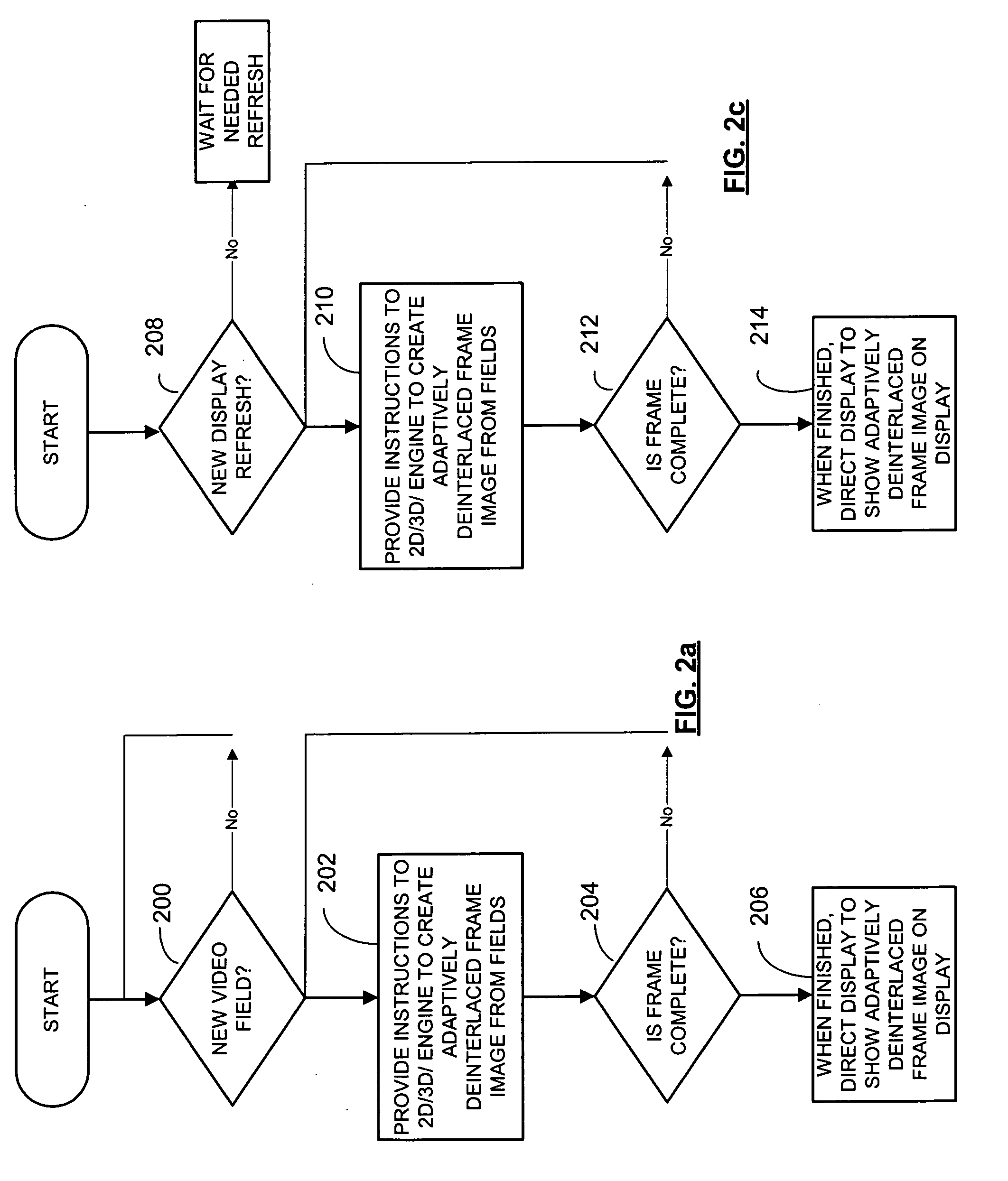Method for deinterlacing interlaced video by a graphics processor
a graphics processor and video technology, applied in the field of deinterlacing interlaced content, can solve the problems of poor image quality, picture quality problems, personal computers with multimedia capabilities,
- Summary
- Abstract
- Description
- Claims
- Application Information
AI Technical Summary
Problems solved by technology
Method used
Image
Examples
Embodiment Construction
[0028] A method for deinterlacing interlaced video using a graphics processor includes receiving at least one instruction for a 2D / 3D engine, such as a rendering engine, drawing engine or other suitable structure that receives or reads in image data, renders image data and writes out image data, to facilitate creation of an adaptively deinterlaced frame image from at least a first interlaced field. The method also includes performing, by the 2D / 3D engine, at least a portion of adaptive deinterlacing based on at least the first interlaced field, in response to the at least one instruction to produce at least a portion of the adaptively deinterlaced frame image. Once the information is deinterlaced, the method includes retrieving, by a graphics processor display engine, the stored adaptively deinterlaced frame image generated by the 2D / 3D engine, for display on one or more display devices. The method also includes issuing 2D / 3D instructions to the 2D / 3D engine to carry out deinterlaci...
PUM
 Login to View More
Login to View More Abstract
Description
Claims
Application Information
 Login to View More
Login to View More - R&D
- Intellectual Property
- Life Sciences
- Materials
- Tech Scout
- Unparalleled Data Quality
- Higher Quality Content
- 60% Fewer Hallucinations
Browse by: Latest US Patents, China's latest patents, Technical Efficacy Thesaurus, Application Domain, Technology Topic, Popular Technical Reports.
© 2025 PatSnap. All rights reserved.Legal|Privacy policy|Modern Slavery Act Transparency Statement|Sitemap|About US| Contact US: help@patsnap.com



